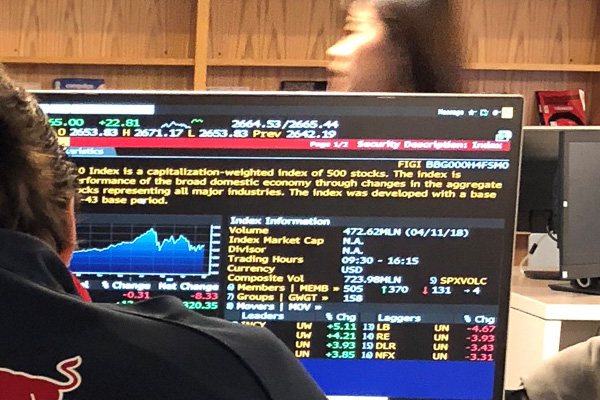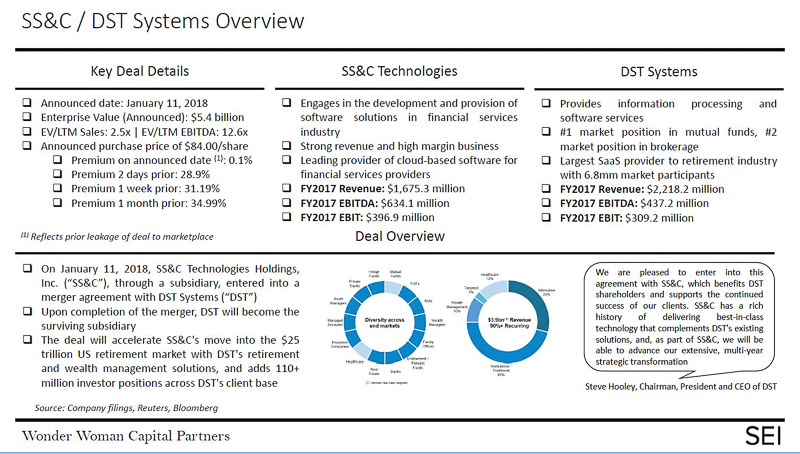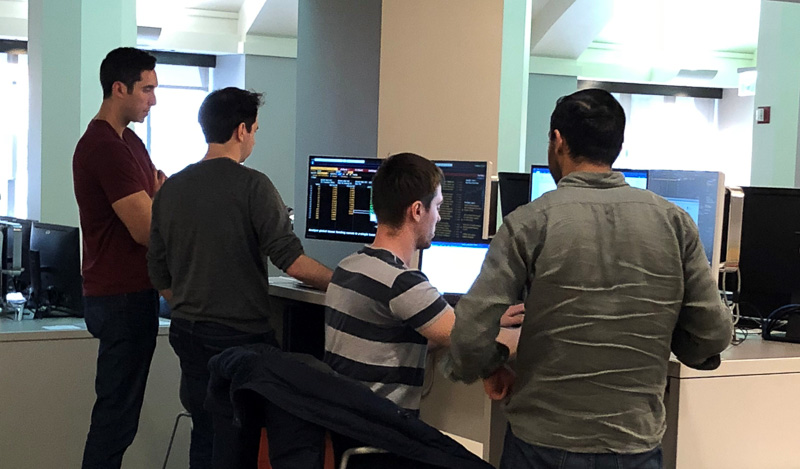Mergers and acquisitions and lots of introspection

By Santiago Diaz, Two Year MBA ’19
Mergers and acquisitions (M&A)—the bread and butter of investment banking; the first thing that should come to mind when one thinks about the industry. It’s the service that bulge brackets, independents, and boutique shops provide to clients when they are considering vertical or horizontal integration, expansion into new markets, or inorganic growth opportunities.
Our chance to take a stab at this type of transaction came just like the other cases in the investment banking immersion: a prompt email from Drew Pascarella, lecturer of finance, and additional information regarding team assignments on Blackboard. However, just like in the leveraged buyout (LBO) transaction, we were required to submit a model individually to get our feet wet. Thankfully, we had just finished an M&A and LBO training session by Pillars of Wall Street, so I had some confidence when approaching the model. Boom, model sent—now, we can focus on the case and its intricacies.
Mergers and acquisitions deal background
As is common practice, I open the file to review the details: the transaction in question was the proposed acquisition of DST Systems (DST) by SS&C Technologies (SSNC). The transaction had been announced recently, and we were tasked with not only analyzing the transaction, but also pitching the transaction to a potential suitor, SEI Investments Company (SEIC).
The transaction was taking place in the financial technology space. SSNC, a leading provider of cloud-based software for financial services providers, was looking to acquire DST in an effort to tap into the $25 trillion US retirement market, given DST’s strong position in the market. Our task was to replicate the analysis bankers completed when the deal was first announced, and given the information readily available, to see whether the deal was immediately accretive (whether the combined company’s earnings per share (EPS) would be greater than SSNC’s standalone EPS, and by how much on a percentage basis.)

The devil is in the ‘leaked’ details
I went into the model with the intention of creating a financial masterpiece to be auctioned at Christie’s or Sotheby’s alongside a newly rediscovered da Vinci—I was in for a rude awakening. Some of the model inputs include current financial projections, as well as the ‘unaffected share price,’ which is the share price of both companies before the deal is announced to the market. Regarding the financials, there was some disagreement among the team and the class regarding what should be used—should we use the recent 10-K (annual report) published after the deal was announced in order to get the actual financials? Should we use financial data before deal announcement, like 10-Qs (quarterly reports) and 8-Ks (used to notify investors of a current event like financial results, mergers, restructurings, etc.)? Thankfully, we have TA sessions led by second-year students that provide some guidance—it was suggested we use the recent 10-Ks, since the meeting regarding the pitch to SEIC would happen after the publication of said reports.
After crossing off the issue with the financials, came the mystery behind the unaffected share price. The more we analyzed it, the more interesting it became… we couldn’t use the share price as of announcement because it was already up significantly. The day before? Nope, still higher—two days prior made more sense. But why? Turns out the deal was leaked prior to announcement, and we decided to use the two-day prior share price.
While some people may think that putting together an M&A model is very easy, without prior experience, it can be challenging. The model is fed by several variables that will flow through the model, which could eventually have an impact in the proforma EPS, which in turn could affect the level of accretion, if any. One thing I learned by putting this together, was that the banker has to truly comb over every single piece of information available regarding the deal, or the companies, in order to provide the analysis that the bank is hired to do. No stone can be left unturned. One has to look at all the filings, consensus estimates, and even call transcripts, in order to put together an accurate picture.

A potential suitor
The analysis of the SSNC-DST deal was done, and model outputs including sensitivity tables were populated. What’s next? Now, we had to do a similar analysis but for a potential suitor: SEI Investments Company. SEIC is an asset management company that also provides outsourcing solutions to its client base. A potential deal with DST would make sense, since it would complement SEIC’s positioning in the retirement market with a market leading platform, among other potential synergies. This time, however, our analysis would focus on determining what potential premium would make sense for DST’s shareholders and board of directors to consider SEIC’s bid more favorable than SSNC’s. This is one of the reasons why sensitivity analyses are so valuable, because they provide an estimate on accretion or dilution based on different levels of premium over share price (sensitivity analyses can be applied across the board, and one can change the variables to extract the information—it is not limited to accretion or dilution).
All hands on deck, and front seat to the barbecue
The models were ready (at least we thought they were), and we proceeded to build the PowerPoint deck. According to the instructions, the narrative should include:
- transaction summary,
- timeline of key events,
- discussion on synergies,
- financial review, and
- indicate how a potential SEIC transaction would look like with its respective analysis.
As is common practice with other transactions, we put together the deck, send the PDF version, print the hard copy, and deliver it to Drew’s office. Then, we break to reconvene on Monday afternoon for the debrief.
The debrief was very interesting this time around: we noticed that expectations were starting to increase. Since we completed several transactions already, each team should be ready to address some of the questions regarding the findings. As Drew grilled the presenting teams, everyone sharpened their pencils because a lot of insight comes from the questions that he asks as he reviews the deck being pitched.
After the presentations, the whole investment banking immersion class came together so Drew could walk us through his analysis. Personally, this is my favorite part of the dynamic, because it allows me to decipher what I did right, what I did wrong, and what I could’ve truly improved on. I realized that I missed many things that were fundamental in the analysis, but I am truly grateful to Drew, because thanks to his insight, I now feel better prepared to target the next M&A transaction!


Comments